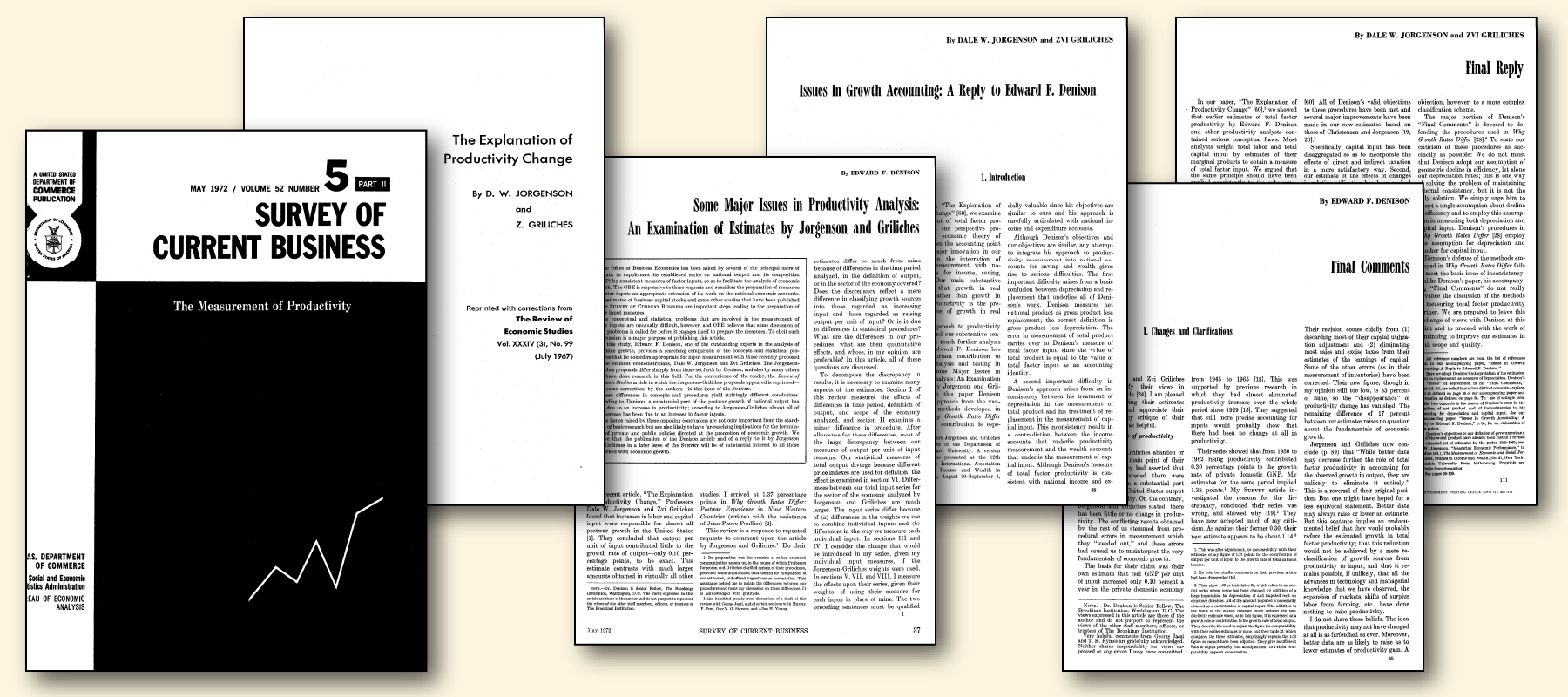The Evolution of the Measurement of Productivity
During the late 1960s and early 1970s, there was considerable debate among economists surrounding the topic of productivity and its measurement. The Office of Business Economics, predecessor of the Bureau of Economic Analysis (BEA), was asked by some of the major users of its data to produce consistent measures of factor inputs to help them analyze economic growth. Thus ensued many discussions among prominent econometricians on how to accomplish this difficult goal. The purpose of Part II of the May 1972 issue of the Survey of Current Business, “Measurement of Productivity,” was to begin that dialogue.1
The special issue comprises a collection of several articles that captured the conflicting views between leading economists Edward F. Denison and the team of Dale W. Jorgenson and Zvi Griliches. The contradictory opinions stemmed from major differences in the concepts and methodologies used by these economists.
The original study from 1967, “The Explanation of Productivity Change,” by Jorgenson and Griliches claimed that the postwar output growth in the Unites States was almost entirely attributable to an increase in factor inputs, such as labor and capital. Denison's critique, “Some Major Issues in Productivity Analysis: An Examination of Estimates by Jorgenson and Griliches,” argued that the increase was a result of productivity growth. Over the next 5 years, the two sides would come closer together on their ideology, with Jorgenson and Griliches revising their initial study to align more with Denison and assigning a much larger source of output growth to productivity in a third article called “Issues in Growth Accounting: A Reply to Edward F. Denison.” However, there was still much debate on the treatment and measurement of capital covered in the last articles in the issue, “Final Comments” and “Final Reply.”
Pages from “The Measurement of Productivity” as they appeared in
Part II of the May 1972 issue of the Survey of Current Business.
In the years that followed, great advances were made in the methods to measure productivity growth including capital. BEA introduced “economic measures of capital consumption that were valued at replacement cost rather than historical cost to better reflect the depletion of capital assets,” leading to enhanced analysis of productivity.2 Over time, BEA has continued to make improvements on these statistics.
The measurement of productivity is still an important topic in economics today. At BEA, research is ongoing on the measurement of productivity of the U.S. health sector due to its significant growth over recent years. This has raised questions again about the source of growth. Similarly, there is ongoing research in measuring the “free” digital economy and the productivity impact of these innovations.
We hope you enjoy this reprint of the May 1972 Survey issue on the measurement of productivity.
- Part II of the May 1972 issue of the Survey of Current Business immediately follows Part I on page 89 of the pdf.
- BEA's methodology papers are available on BEA's website. See also page 10 of NIPA Handbook: Concepts and Methods of the U.S. National Income and Product Accounts.
